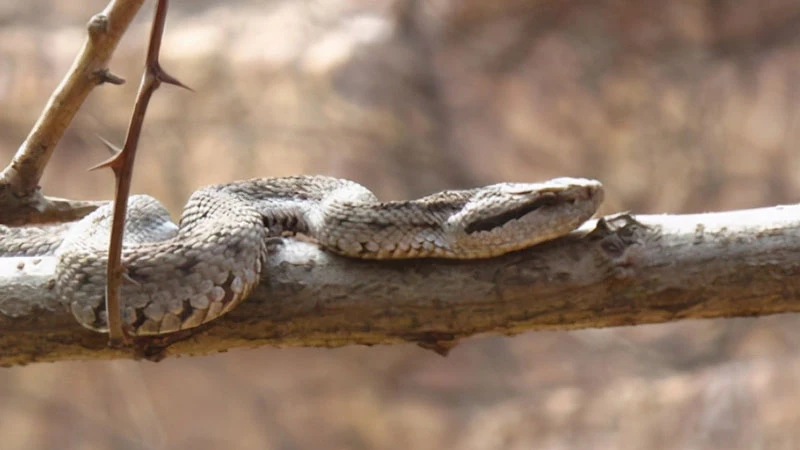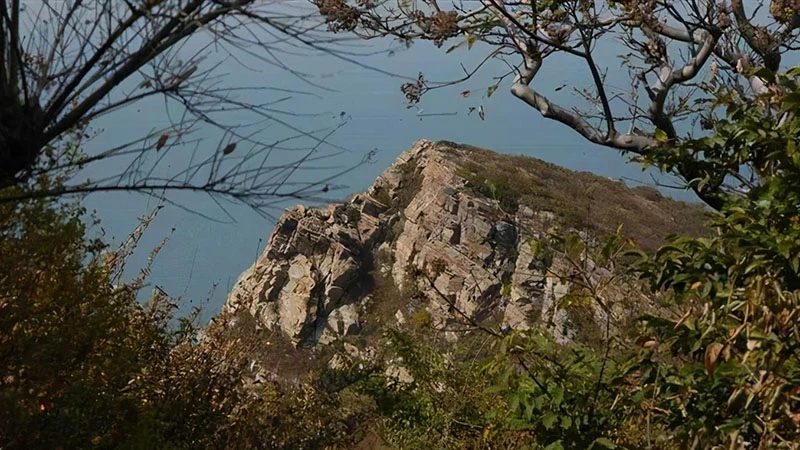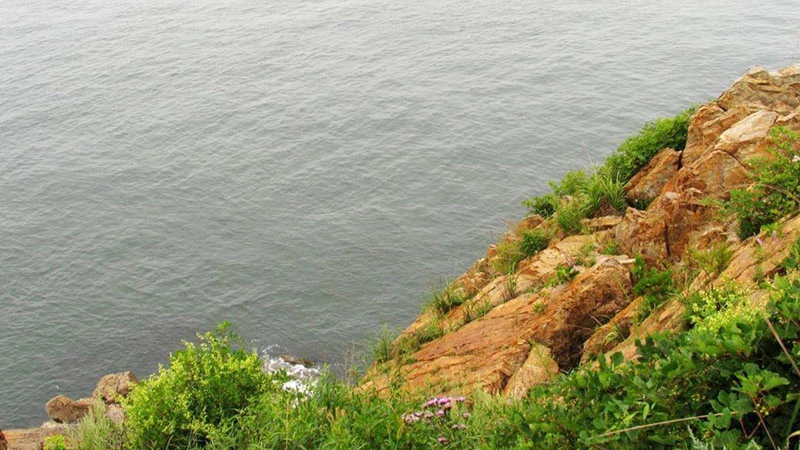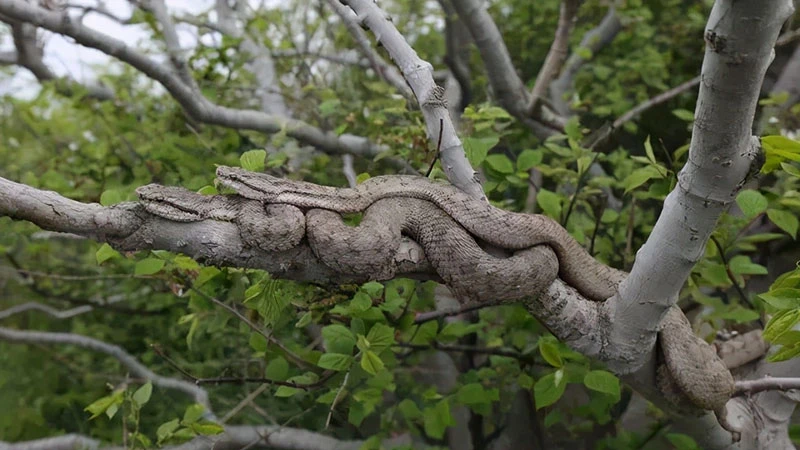When we think of nature reserves, we often imagine vast expanses dedicated to the protection of diverse wildlife, rich with biodiversity. Countries worldwide have established these sanctuaries to ensure the survival of endangered species, like the rare Pacific green turtles thriving in Costa Rica’s Ostional Wildlife Refuge or the elusive Chinese giant salamanders in Zhangjiajie, Hunan. These reserves create safe havens where creatures can thrive, shielded from the threats of habitat destruction and poaching.
However, one reserve stands apart from the rest—Dalian’s Snake Island, a peculiar microcosm where the preservation of life has taken an unusual turn. Instead of a bustling biodiversity hotspot, Snake Island has become a domain for a singular species—the black-browed viper. Here, nature’s balance seems to have tipped in an unexpected direction, leading to an explosion in the population of these serpents.

The Proliferation of the Black-Browed Viper
Covering just 1.2 square kilometers, Snake Island may not seem like much, but it serves as an ideal habitat for the black-browed viper, a species known for its cold tolerance and potent venom. This small island has transformed into a bustling metropolis for vipers, boasting an astonishing population density of over 20,000 individuals, all of the same species.
The black-browed viper, once an inhabitant of a diverse ecosystem, has thrived here to the point of overwhelming its environment. The island’s limited resources and space have led to an unusual phenomenon—the vipers have entered a cycle of overpopulation, competing for food and space in a way that highlights the fragility of ecosystems. With no natural predators to keep their numbers in check, the vipers have taken over, turning Snake Island into a living example of the paradoxes of wildlife conservation.
Nature's Balance Disrupted
On Snake Island, the lack of diversity has had significant implications for the black-browed viper population. With other species unable to coexist in such a confined area, the vipers have flourished without competition. However, this unchecked growth poses challenges. While they may dominate the island, the overwhelming numbers create a strain on available food resources. The small island is not close to the mainland, and aside from a few wandering rodents, the vipers face a severe food shortage.
In response to this scarcity, the black-browed vipers have evolved unique survival strategies. Unlike most snakes that hibernate once a year, these vipers engage in a remarkable double dormancy, entering a state of sleep not just in winter but also during the summer months. This adaptation allows them to conserve energy and maximize their chances of survival during times of food scarcity, ensuring that they can endure the periods when prey is hard to come by.
The Dance of Predators and Prey
Interestingly, while food scarcity poses challenges for the vipers, nature still provides some reprieve. Every year, migratory birds traveling south for the winter become unsuspecting prey for the hungry vipers. The island, devoid of the usual predators, has become a hunting ground, where the vipers prepare themselves for the arrival of these birds. This cyclical relationship illustrates the intricate dance of predator and prey, even in an ecosystem that seems to be spiraling out of balance.
However, the existence of the black-browed viper is not without risks, particularly for humans. Their potent venom, significantly more toxic than that of many other snakes, has led to increased encounters with people in nearby regions, where they sometimes prey on livestock. This reality highlights the broader implications of human encroachment on natural habitats, where wildlife increasingly interacts with human populations.
A Lesson from Nature
Dalian's Snake Island serves as a striking reminder of the complexities of wildlife conservation. While the preservation of a single species has succeeded, it has led to unforeseen consequences that challenge our understanding of biodiversity and ecological balance. The situation on Snake Island exemplifies how conservation efforts, while noble, can inadvertently lead to imbalances that threaten not just the species being protected, but also the ecosystems they inhabit.
In a world increasingly dominated by human activity, the lessons from Snake Island remind us that nature's balance is delicate. Each species plays a role in the broader tapestry of life, and the protection of one at the expense of others can lead to consequences we may not fully anticipate. As we continue to champion wildlife conservation, we must remain vigilant, ensuring that our efforts foster not just survival but the thriving of diverse ecosystems.



